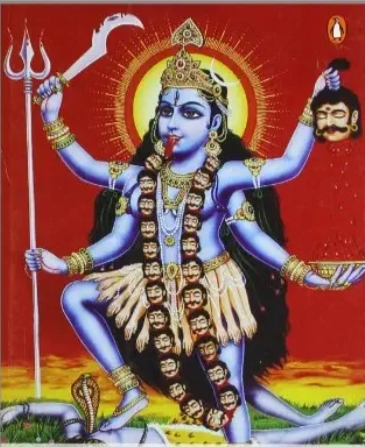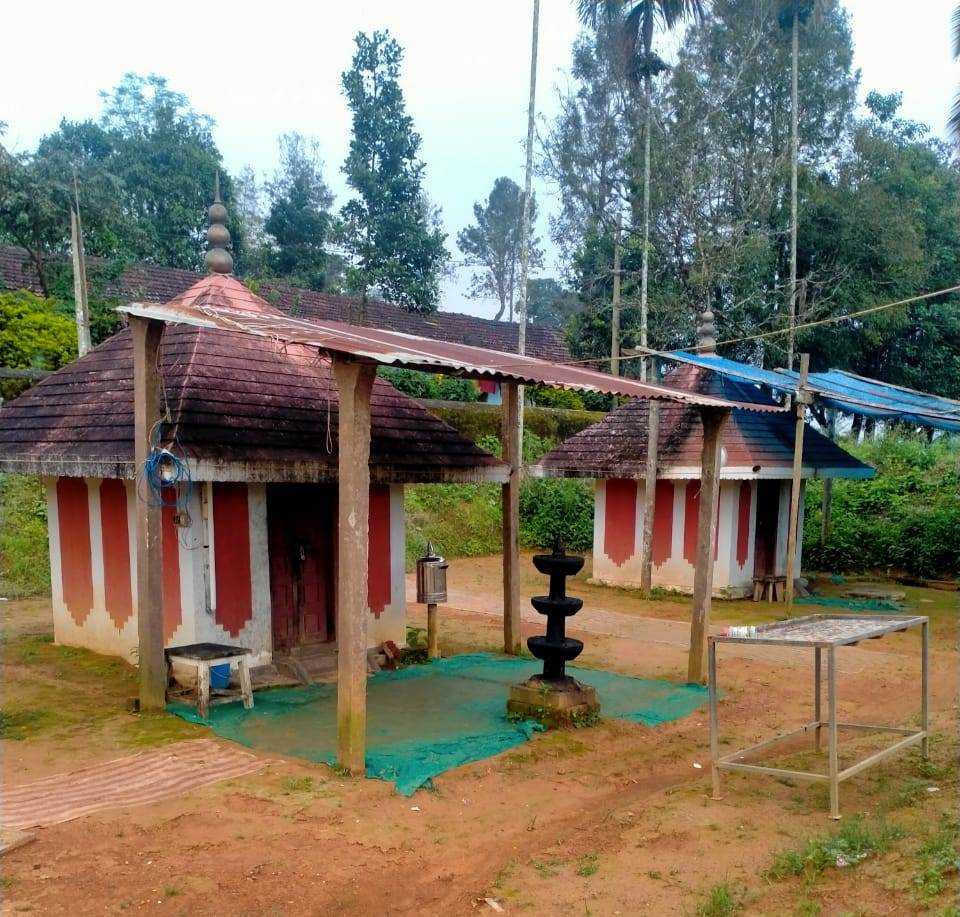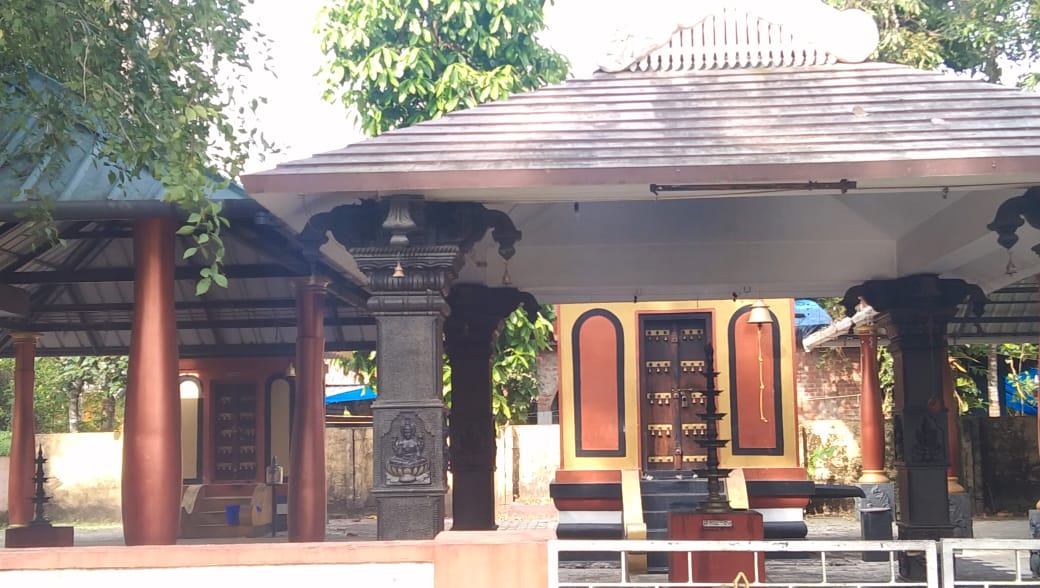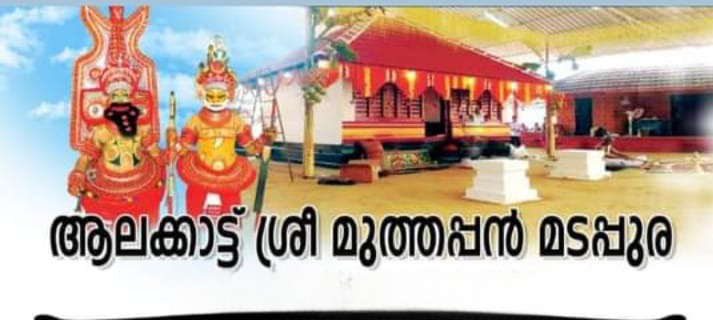The only one Garuda Temple in India is situated in Malappuram district in Kerala near Tirur, which is known as Vellamassery Garudan Kavu Temple. Very near to it there is a Mahavishnu Temple in Koormavathara form. This Garuda Temple is about 1800 years old. Worshipping here is mainly meant for easy recovery from diseases and for relief from serpent poisons. All Sundays are important here especially the 41 days of Mandalakalam (From November 16th to December 28th).
To the Hindus, Garuda is the Lord without beginning and without end. He is born and eternal in the true sense God incarnation. He is adorned and worshipped as supreme Lord.
According to our epics and legends prevailing in the local area, this is the only temple of Garuda in his flying form in this country. The idols here have been shown their own special features.
Centuries ago a great sage immersed in penance was able to realize the vision of Lord Vishnu and requested him to boon him a way out for the human soul from pain and sin. As if explaining to his divine vehicle Garuda, Maha Vishnu elucidated the methods and ways of redemption open before the human soul in its predicaments. To keenly participate in this dialogue of his master, the Garuda flew and sat on a location which now is the bank of the Theertha pond of the Garudan Kavu temple. That place where Vishnu gave darshan to his devotee too became a holy spot. Centuries later at this divine location, as if explaining to his devine vehicle Garuda, His highness the Raja of Vettathu Nadu constructed a temple. He gave it as a danam. It is believed that later the penance undertaken by Sree Padmapadacharyar, a disciple of Jagad Guru Sri Sankaracharya in this temple added much to the nobility and lore of this temple.
The temples of Kerala reverberate with the exploits of the Great Mason Perunthachan. The Garudan kavu also contribute to this lore. Once Perunthachan came to the Vettath Nadu Palace to pay his homages to the King. He had brought with him a statue of Garuda throbbing with life and lusture. Raja wished had it had a life of its own! He could not help expressing his strange admiration and wish. The great shilpi replied that the statue indeed would comply, provided a pure wife was to touch it. The Raja did not enjoy the reply. Sternly he pronounced death for Perunthachan if he eventually were to be proved wrong when tested with an expeiment.
Perunthachan was unfazed and smilingly he quried what reward his statue could garner if indeed it became live as he had predicted .The Raja fairly promised a temple for the statue in that case.
Perunthachan went to a trance. His wife was brought to touch the statue. On her touch it flew up and the kings men followed it with wonder. There was a Vishnu temple belonging to Karuthedam and Ampala Paveri and Mullappalli manas. A big pond full of white tortoises was near it. The Vishnu temple and the tortoises are related in hindu beliefs traditionally. The statue eventually came and rested on the top of one tortoise in the pond. This is the place now called Theertha Kund.The tortoise began to crawl to the Vishnu temple. Raja invited the Tantries of Karuthedath Mana to deliberate further actions. That resulted in the formation of the current Garudan kavu facing the west. The name of the place currently is Vellamassery which literally represents a settlement group of white tortoises!
The temple complex grew later substantially. Sankara Narayana and Shiva prathisthas facing the east came up. On the left of Lord Garuda, one can worship today Veettekkaran and Kartha Veeryarjunan. Vishnu and Sankara Narayanan have Namaskara Mandapa. Vishnu has a balippura on the south as well. At west one can pray Sastha, Bhagavathy, Ganapthy and Bhadra Kali. There is a gopuram at the west and a deepasthambham inside. The large and serene temple pond on the south adds to the pride of this temple. There is also daily pooja in the temple.
Even while the other temples were accessible to savarnas only before the declaration of Temple entry right for all Hindus, this temple was open to all on every Sundays; is quite a remarkable feature. Garuda always retained an elitist height from where every human being had an equal opportunity for approach as was enunciated by the Lord Vishnu in the Garuda Purana.
Of course the attacking forces of Tippu did not spare this temple. The human constructions were destroyed by that storm. But the belief system sustained and the temple was resurrected later. No force material ever destroys a human belief system based on nature. Tippu and his victorious forces - where did they end up eventually?
Every year, Vrischika mandala time is celebrated as the Garuda festival. After 41 of mandala the two days are for Vishnu celebrations. Garuda gets one only kalasham. Poojas are on Visnavite style. Vishnu always sleep on the Anantha(or the endless), the eternal snake.
The Utsavas here has only anushtana vadyas (Chenda, panchavadyam etc.). Garuda celebrations do not engage elephants. But for Vishnu celebrations no such restrictions exist. Garuda gets excited and happy at his lords pleasures.




No Events for next 2 days